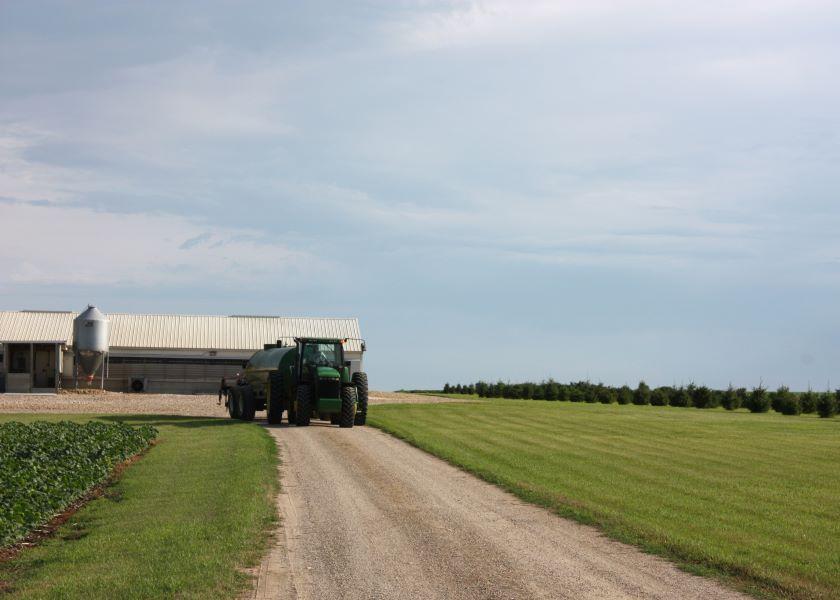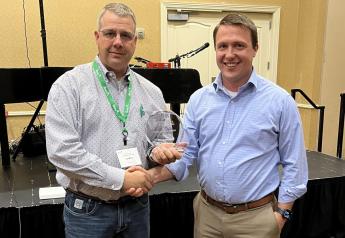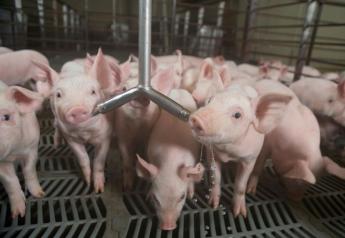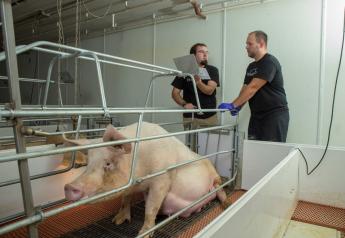Pig Farmers Commit to Sustainability: Here’s the Proof

No one will argue that the pressures pig farmers face when it comes to environmental stewardship of air, soil and water are going to continue to increase.
That’s why the National Pork Board has developed a new program to capture the progress and improvement the pork industry is making toward becoming more environmentally sustainable every day. Farmers representing more than 85,000 acres and 300,000 pigs are participating in a new Pork Checkoff program utilizing On-Farm Sustainability Reports.
“We started these projects with pork producers to be able to measure and verify the sustainability practices which are occurring at their farms. And with that, because we're measuring the different sustainability practices they're doing with their farms, we're also able to figure out ways that we can become even more sustainable,” says Marguerite Tan, director of environmental programs at the National Pork Board.
It didn’t take long for Dale Stevermer, a Minnesota pork producer, to become interested in this program because he wanted to know if the changes he made to his operation have affected his farm’s overall sustainability.
“To protect our freedom to operate, we need current, real-life numbers and to be advocates and educators. We need baseline numbers so we can strive for continuous improvement; and that is what the industry has built itself on throughout the past 50-60 years,” Stevermer says.
But until now, capturing those numbers has been a bit like the Wild West. So, the National Pork Board partnered with third-party expert Sustainable Environmental Consultants (SEC), to make data collection and aggregation quick and efficient.
The program is supported by Pork Checkoff dollars, so the only cost is your time for submission, Stevermer says.
“It took about an hour for me to compile the data,” he explains. “It touches basically one year’s worth of overall production. The program is able to import and use various platforms that producers are already using, especially on the grain side. If you’re able to give them permission strictly for your operation for that year, they can go online and get that information, compile it and not take any more of your time.”
What Happens with Your Data?
To put it simply, Stevermer says the data is stored in a series of lockers for each producer. Each producer can go in, look at their data in their own locker and share it with whomever they want.
“The state and national boards also have access to aggregates, the state has access to their particular state’s aggregated data, which is all obviously anonymously aggregated, and National Pork Board has access to the overall,” Stevermer says. “It ends up being pretty powerful.”
In addition, he believes it will be a great opportunity for producers to do a direct comparison between commercial fertilizer and manure. Additional precision data will also help with this comparison.
“One of the things I've noticed is that the equal practices platform is driven quite a bit by the actual agronomy practices you're using. It is looking at calculated carbon dioxide emissions and calculated carbon captured. It also measures the estimated soil erosion per acre,” Stevermer says.
In the future, this data could also be beneficial in unlocking potential carbon markets, he adds.
“This gives me that third-party verified information and potentially saves me a step in overcoming another hurdle. It can also be used as a good way to defend the practices I am doing,” Stevermer says.
If their family would decide to expand their operation, he believes this information could be helpful to take in to show area residents and the impact of their farm on the community.
“And looking at my data so far, it has a positive impact on the soil and environmental outcome,” Stevermer says.

Renewable Proof
Using the third-party verified platform is a way to show stakeholders how pig production is renewable and sustainable.
“The third party is verifying all of the practices that producers are doing at their farms,” Tan says. “So let's take manure management, for instance. They're verifying how many gallons of manure were applied to those fields. They are verifying the field application rates, crops in those fields, as well as the nutrient management plans that oversee those fields.”
The best part? They are then able to show how much commercial fertilizer was offset by using renewable manure, Tan says.
“Not only are we able to feed corn to the pigs, but we're able to take the manure from those pigs and fertilize the grain crops and not have to use commercial fertilizer to raise those grain crops,” she says.
The industry has to do a better job of sharing its commitment to sustainability. The On-Farm Sustainability Reports provide the data to back it up.
“Manure builds soil health,” Tan says. “When you use manure as a fertilizer, it helps that soil hold on to those nutrients better and helps soil hold on to water better. It also helps hold that soil in place. Soil erosion has been a very big challenge for cropping in the past, and pig manure acts like glue and sticks that soil into place and keeps it there.”
How Will the Industry Benefit?
The No. 1 benefit of this program is to help producers make better decisions on their farms. However, state and national organizations can use the aggregate impact of what producers are doing on their farms to help advocate for the industry.
This program brings value to the producer, and the organizations. Ultimately, it helps all producers better share its sustainability story. And it’s quite a story to tell, Tan says.
“We are sequestering carbon like forest systems – it’s so exciting,” Tan says. “We’re also able to measure pollinator habitat, butterfly habitat and wildlife habitat. And these are all things that are second nature to producers – every day is Earth Day on the farm. It’s what we do, but producers never get the credit for it. Now the numbers will provide the proof.”
Request an On-Farm Sustainability Report here.
Read More:
The Carbon-Neutral Pig and Chicken: The Pivotal Moment is Now







